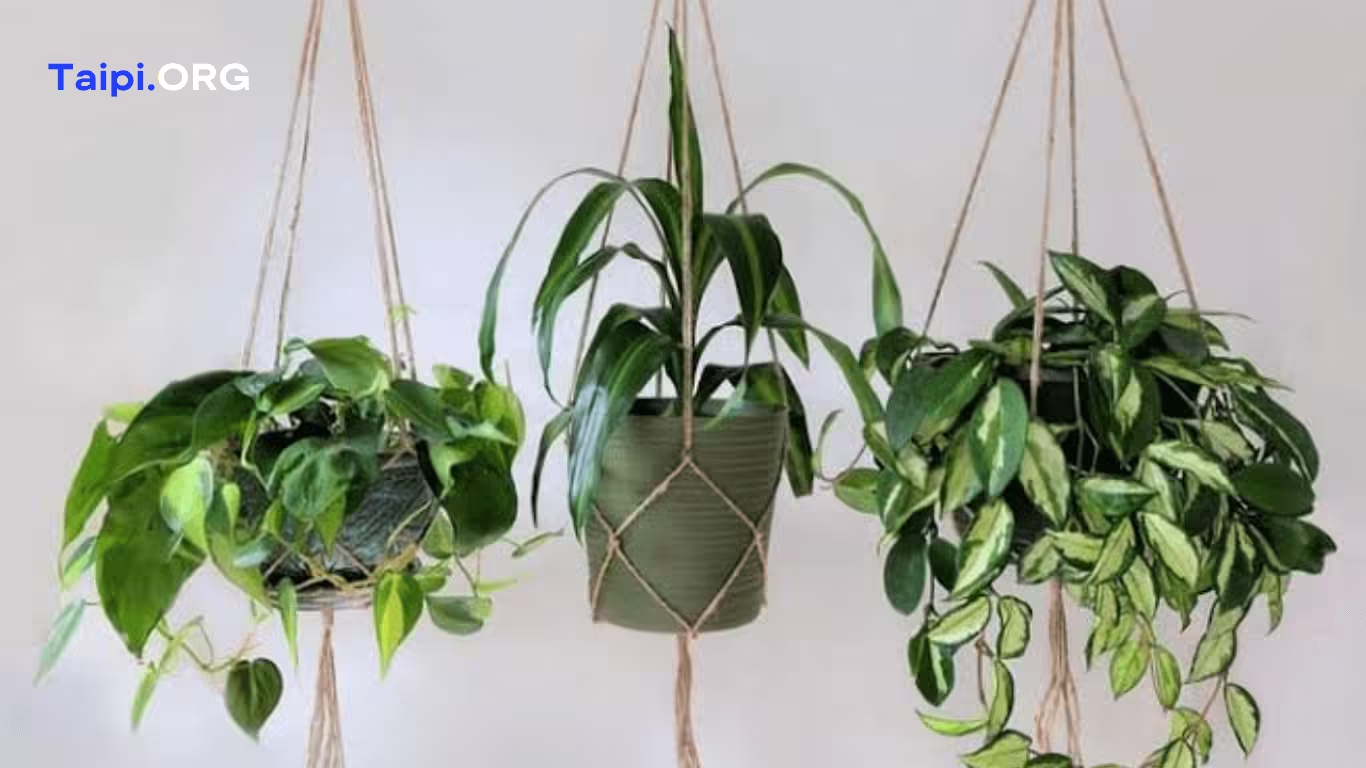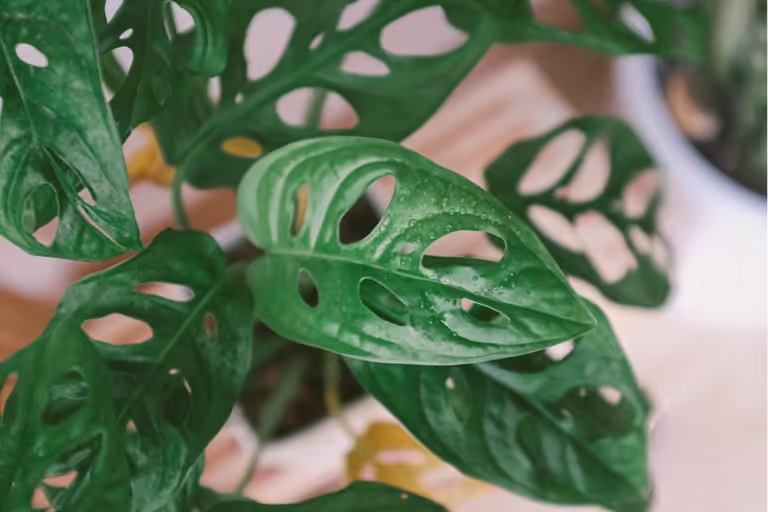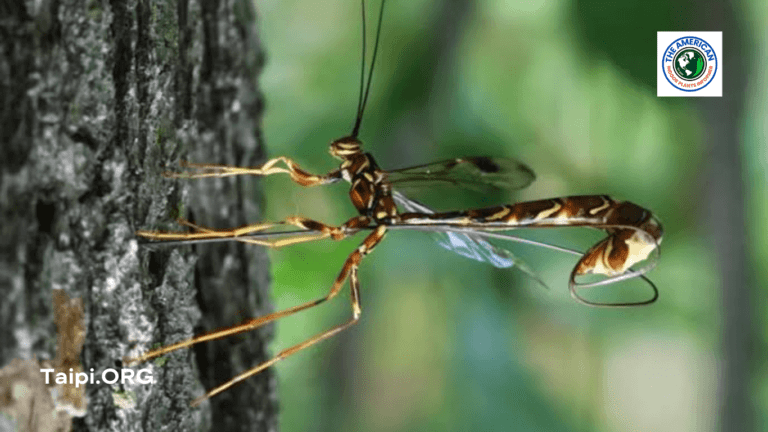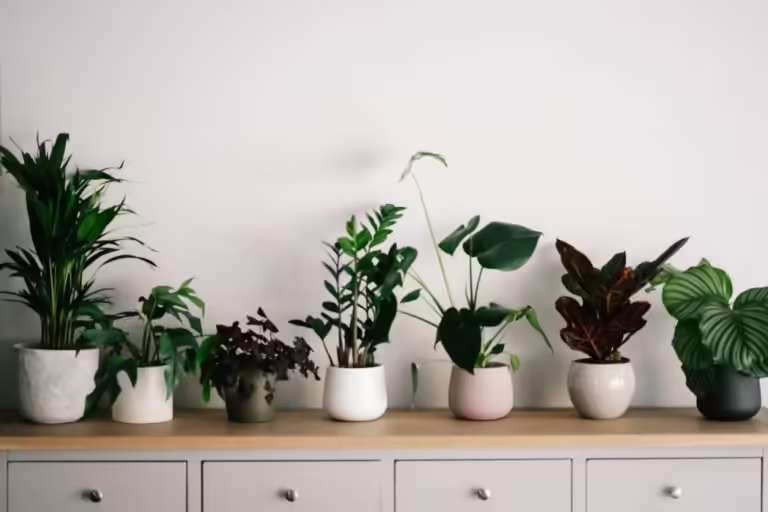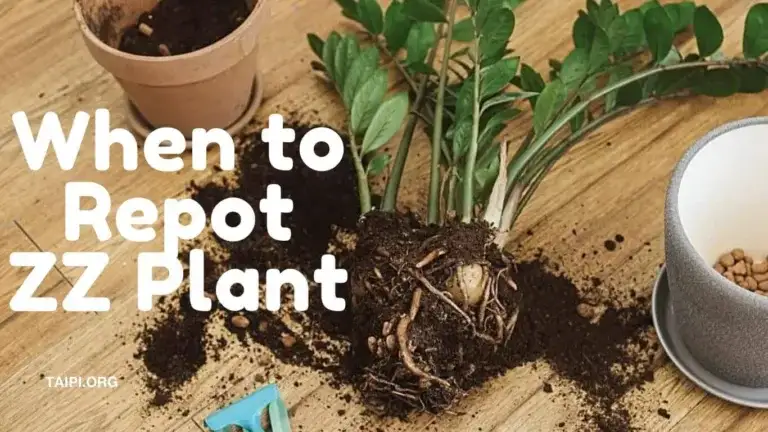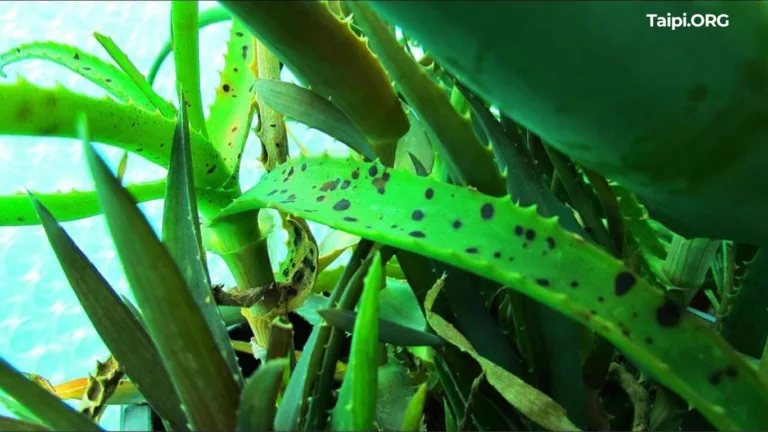15 Low Light Indoor Hanging Plants
IN THE hustle and bustle of modern life, creating a tranquil and inviting indoor space is more important than ever. One way to achieve this is by incorporating low light indoor hanging plants into your home decor. These green companions not only add a touch of nature to your surroundings but also thrive in spaces with limited natural light.
Related: 10 Indoor Plants with Yellow Flowers
The common low light indoor hanging plants include:
- Spider Plant (Chlorophytum comosum)
- Pothos (Epipremnum aureum)
- ZZ Plant (Zamioculcas zamiifolia)
- Philodendron Heartleaf (Philodendron hederaceum)
- Hoya (Hoya carnosa)
- Peace Lily (Spathiphyllum)
- String of Pearls (Senecio rowleyanus)
- Nerve Plant (Fittonia verschaffeltii)
- Lipstick Plant (Aeschynanthus radicans)
- Parlor Palm (Chamaedorea elegans)
- Ferns (Various Species)
- Rattlesnake Plant (Calathea lancifolia)
- English Ivy (Hedera helix)
- Dracaena Marginata (Dracaena reflexa)
- Chinese Money Plant (Pilea peperomioides)
The 15 Low Light Indoor Hanging Plants
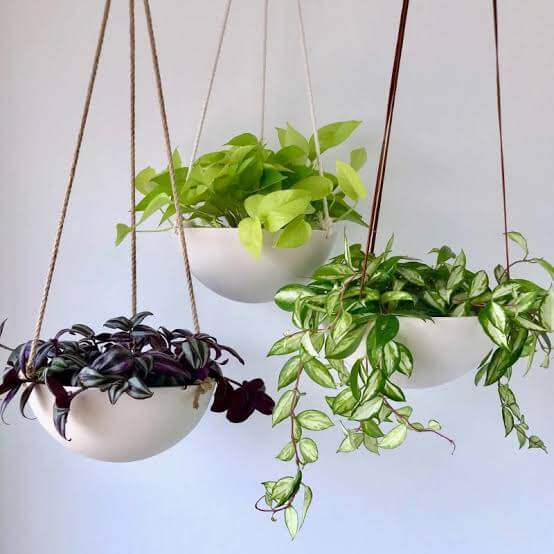
Let’s now look at each of these indoor hanging plants low light.
1. Spider Plant (Chlorophytum comosum)
Known for its adaptability and air-purifying qualities, the spider plant is an excellent choice for low light areas.
The plant’s arching leaves and baby spiderettes make it an attractive addition to any indoor space.
Hang it in a macramé planter near a window, and watch it flourish with minimal care.
2. Pothos (Epipremnum aureum)
Pothos, also known as Devil’s Ivy, is a hardy and versatile hanging plant that can thrive in low light conditions.
Its cascading vines create a lush and elegant look, making it perfect for hanging baskets.
Pothos is incredibly low-maintenance and can tolerate occasional neglect.
3. ZZ Plant (Zamioculcas zamiifolia)
If you’re looking for a stylish and resilient hanging plant for low light areas, the ZZ plant is an excellent choice.
The ZZ’s dark green leaves add a touch of sophistication to any space.
In addition, the plant is known for its ability to tolerate low light and infrequent watering, making it ideal for busy individuals.
Also see: 8 Beneficial Bugs for Houseplants
4. Philodendron Heartleaf (Philodendron hederaceum)
With its heart-shaped leaves and trailing vines, the Philodendron Heartleaf is a charming hanging plant that thrives in low to moderate light.
It adds a touch of romance to your indoor environment and is easy to care for, making it perfect for both beginners and experienced plant enthusiasts.
5. Hoya (Hoya carnosa)
Also known as the Wax Plant, Hoya is a captivating hanging plant with waxy, star-shaped flowers.
It can tolerate low light conditions, making it an ideal choice for indoor spaces with limited sunlight.
Hoya’s unique appearance and low-maintenance nature make it a popular choice for hanging plant enthusiasts.
6. Peace Lily (Spathiphyllum)
The Peace Lily is not only renowned for its elegant white blooms but also for its ability to thrive in low light conditions.
This graceful plant is an excellent choice for hanging baskets, adding a touch of tranquility to your indoor space.
It also helps purify the air by removing common pollutants, contributing to a healthier home environment.
7. String of Pearls (Senecio rowleyanus)
For a unique and eye-catching hanging plant, consider the String of Pearls.
With its cascading strands of spherical leaves, this succulent is well-suited for low-light areas.
Hang it in a well-draining pot to showcase its distinctive appearance and watch as it becomes a conversation starter in your home.
8. Nerve Plant (Fittonia verschaffeltii)
The Nerve plant is number eight on my list of hanging indoor plants low light. With its vibrant and veined leaves, is an ideal choice for those seeking a pop of color in low-light spaces.
It thrives in humid conditions, making it suitable for bathrooms or kitchens with low light.
Hanging baskets allow the Nerve plant to display its striking foliage while adapting to the subdued light levels.
9. Lipstick Plant (Aeschynanthus radicans)
The Lipstick Plant gets its name from its vibrant tubular flowers that resemble a tube of lipstick.
This hanging plant is well-suited for low-light environments and adds a splash of color to your indoor decor.
Its trailing vines and unique blossoms make it an intriguing addition to any hanging basket.
10. Parlor Palm (Chamaedorea elegans)
If you’re looking to introduce a touch of tropical elegance into your home from the best indoor hanging plants low light, the Parlor Palm is an excellent choice.
Thriving in low light conditions, this palm variety is well-suited for hanging planters.
The Parlor Palm’s arching fronds create a lush and inviting atmosphere, making it a popular choice for both homes and offices.
11. Ferns (Various Species)
For a long time, ferns especially the Boston Fern or Maidenhair Fern have been famed for being among low light hanging plants indoors.
The Boston Fern and the Maidenhair Ferns are well-suited for low-light conditions and add a touch of lush greenery to your indoor space.
To get the best of these indoor low light hanging plants, hang them in baskets to let their delicate fronds gracefully drape down, creating a soothing and natural ambiance.
12. Rattlesnake Plant (Calathea lancifolia)
Known for its striking patterned leaves, the Rattlesnake Plant is a low-light champion.
This tropical beauty adds a touch of drama with its distinctive markings and is perfect for hanging in baskets to showcase its unique foliage.
It thrives in indirect light and adds a touch of the exotic to your indoor decor.
13. English Ivy (Hedera helix)
The English Ivy is another one of the indoor plants low light hanging you need to try.
This classic hanging plant adapts well to low-light conditions.
Its cascading vines and charming leaves make it a popular choice for both indoor and outdoor settings.
The English Ivy is also known for its air-purifying qualities, making it a functional and aesthetic addition to your home.
14. Dracaena Marginata (Dracaena reflexa)
The Dracaena Marginata, or Madagascar Dragon Tree, is a low-maintenance hanging plant with slender, arching leaves.
Thriving in low to moderate light, it adds a touch of vertical interest to your indoor space.
With its distinctive red-edged foliage, this plant brings a contemporary and stylish vibe to any room.
15. Chinese Money Plant (Pilea peperomioides)
The Chinese Money Plant, with its round, coin-shaped leaves, is a charming addition to your indoor hanging plant collection.
It tolerates low-light conditions well and is known for its ease of care.
To get excellent results from the Chinese Money Plant, hang it in a well-draining pot to let its distinctive foliage shine, creating a whimsical and modern touch to your home decor.
You might also like: Tiny Brown Worms in Houseplant Soil
What to Know About Low Light Indoor Hanging Plants
Low-light hanging indoor plants are ideal for spaces with limited natural light. They are best suited for rooms or corners that may not receive direct sunlight.
When selecting these plants, prioritize those known for their ability to thrive in low-light conditions. Examples of these include pothos, spider plants, and various philodendron species.
However, you should still ensure that the hanging spot receives some filtered or indirect sunlight during the day.
So, choose plants with moderate water requirements and use well-draining soil to prevent overwatering. Also, consider the aesthetic appeal of the plants, opting for those with interesting foliage or textures to enhance the visual appeal of your indoor space.
Regularly inspect and maintain the plants for signs of pests, diseases, or dryness. With proper care and attention to these factors, low-light hanging plants can bring a touch of greenery and life to indoor spaces with less natural light.
Indoor Hanging Plants Low Light FAQs
Q: What are the best low-light indoor hanging plants for beginners?
A: Spider Plant, Pothos, and ZZ Plant are excellent choices of hanging indoor plants low light for beginners. These plants are hardy, adaptable, and can thrive in low-light conditions with minimal maintenance.
Q: How often should I water my low-light indoor hanging plants?
A: The frequency of watering depends on factors such as plant type, pot size, and environmental conditions. Generally, it’s recommended to let the soil dry out slightly between waterings to prevent overwatering, which can be detrimental to many low-light plants.
Q: Can I place low-light indoor hanging plants in rooms without windows?
A: While most low-light plants can tolerate reduced light levels, it’s advisable to provide them with some indirect sunlight periodically. If placing them in a room without windows, consider rotating the plants to expose all sides to light or supplementing them with artificial lighting.
Q: What are the signs of inadequate light for indoor hanging plants?
A: Common signs include leggy growth (long stems with widely spaced leaves), yellowing leaves, and a lack of new growth. If you notice these signs, consider moving the plant to a location with slightly more indirect light.
Q: How do I prevent pests on my low-light hanging plants?
A: Regularly inspect your plants for signs of pests such as spider mites or mealybugs. Keep the foliage clean by gently wiping it with a damp cloth, and consider using natural remedies like neem oil or insecticidal soap to control infestations.
Q: What kind of soil is best for low-light indoor hanging plants?
A: Well-draining potting mix is essential for most low-light hanging plants. A mix that includes peat moss, perlite, and vermiculite promotes good aeration and prevents waterlogging, contributing to the overall health of the plants.
Q: Can I use artificial light for my low-light hanging plants?
A: Yes, you can use artificial light, such as fluorescent or LED grow lights, to supplement low-light conditions. Make sure the light intensity and duration mimic natural daylight patterns to support plant growth.
Q: How do I propagate low-light indoor hanging plants?
A: Many low-light plants can be propagated easily. For example, spider plants produce “pups” or baby plants that can be separated and potted individually. Pothos can be propagated from stem cuttings. Research specific propagation methods for each plant type.
Q: Are low-light indoor hanging plants safe for pets?
A: While many low-light plants are generally safe, some can be toxic to pets if ingested. It’s crucial to research each plant and take precautions, such as placing them out of reach or choosing non-toxic varieties if you have pets at home.
Q: How do I fertilize low-light indoor hanging plants?
A: Use a balanced, water-soluble fertilizer diluted to half or quarter strength, and apply it during the growing season (spring and summer). Avoid over-fertilizing, as low light conditions typically result in slower growth and lower nutrient requirements.
My Final Thoughts on Low Light Indoor Hanging Plants
Incorporating low light indoor hanging plants into your living space not only enhances the aesthetic appeal but also contributes to a healthier and more enjoyable environment.
Whether you opt for the air-purifying qualities of the Spider Plant, the cascading vines of Pothos, the elegance of the ZZ Plant, the romantic allure of Philodendron Heartleaf, or the captivating blooms of Hoya, there are perfect low light hanging plants for every indoor setting.
Embrace the beauty of nature within your home and create a serene oasis with these resilient and stylish hanging plants.

